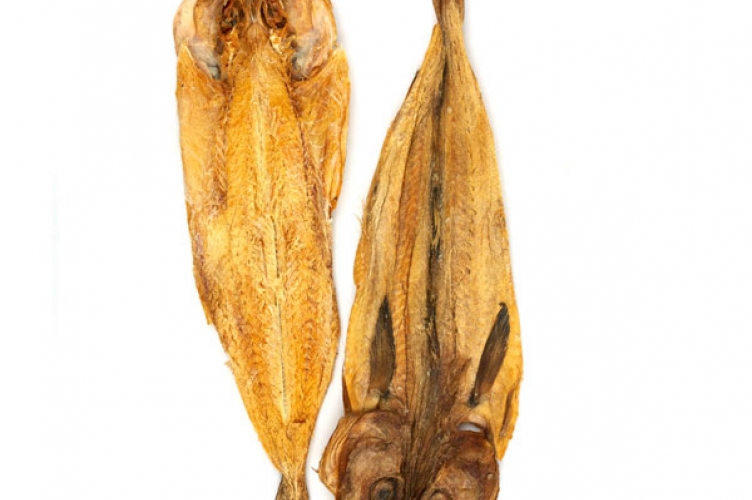Pollock (dried) 황태

Throughout history, pollock has been the most commonly enjoyed fish for Koreans. "Hwangtae" refers to a certain variety of dried pollock. They are frozen and thawed repeatedly around 20 times over 40 days during the frigid winter winds, until they become thoroughly dried and yellowish. Although the drying process requires enormous labor, the end product is a convenient foodstuff easy to store and use for home cooking. In Korea, there is no fish like the pollock, and certainly none with as many names. The freshly-caught pollock is called “saeng-tae;” frozen pollack, “dong-tae. Dried pollack has several names as well: the fully-grown one (when dried for about 60 days) is known as “bugeo,” while the young dried pollack is called “nogari.” The half-dried one is “kodari.” Finally, the one that becomes swollen with yellowish flesh due to multiple temperature changes is also known as “hwang-tae.”
Although dried, pollock are plumpy. This dried fish has a subtle chewiness and though it's flavorful, not a lot of "fishiness." The most popular dried pollock dish is "bukeogook," which is a simple one: dried pollock soup. They are also enjoyed spicy and grilled as HWANGTAEGUI. And they are often served as a grilled and steamed side dish or an appetizer for drinkers. Hwangtae contains almost twice as much protein as fresh pollock as a result of the lengthy freeze-drying process. It also is a high-nutrient, low-cholesterol health food. It is rich in amino acids, including methionine, which is believed to help the liver recover from heavy drinking. Pollock are sold dried.
Buy Korean ingredients online here.
Sourcing & Selecting
We recommend placing them in our Airtight Containers and putting it in the freezer to lock out smells and lock in flavor.
If you have a whole dried pollack, beat the whole pollack with a bat to make it soft. |
|
Then, wrap it with a wet towel and press it with a heavy cutting board or a dish to flatten. |
|
Soak in water to soften, preferably rice-rinsed water, for a while. |
|
When the fish is soaked enough, cut off the head and take the fine bones out of the fish. |











